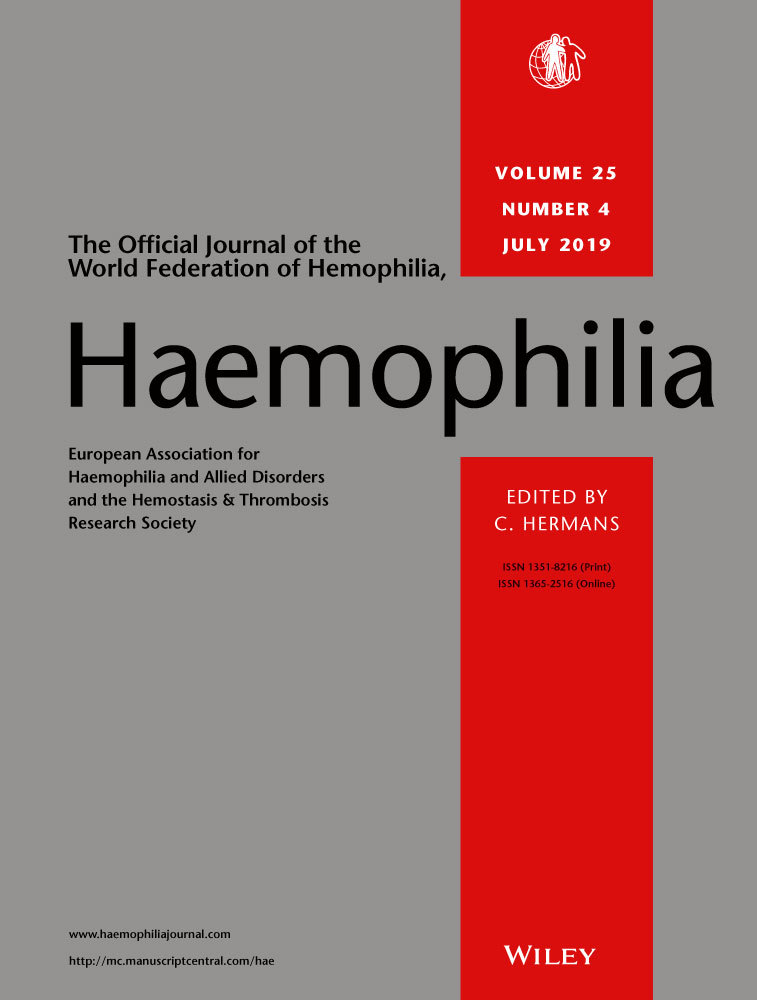Comparison of the efficacy and safety of 12-month low-dose factor VIII tertiary prophylaxis vs on-demand treatment in severe haemophilia A children
Abstract
Introduction
Prophylaxis has commonly become standard treatment for severe haemophilia patients. The World Federation of Hemophilia (WFH) recommends low-dose prophylaxis in countries with resource constraints.
Objective
To determine efficacy and safety of low-dose factor VIII (FVIII) tertiary prophylaxis compared to on-demand treatment in severe haemophilia A children in Indonesia.
Methods
Eligible patients were randomly assigned to prophylaxis and on-demand groups. Patients in the prophylaxis group received infusion of FVIII 10 IU/kg body weight, two times per week. Primary outcomes were the numbers of joint bleeding and total bleeding episodes; secondary outcomes were evidence of FVIII inhibitor, Hemophilia Joint Health Score (HJHS) and Hemophilia Early Arthropathy Detection Ultrasound (HEAD-US) score. Patients were monitored for 12 months.
Results
Fifty patients, all with tertiary prophylaxis, 4-18 years of age, were randomized into prophylaxis (n = 25) and on-demand (n = 25) groups. The mean follow-up time was 12.8 ± 0.86 vs 12.3 ± 0.54 months, respectively. Numbers of total and joint bleeding episodes were significantly lower in the prophylaxis group (P < 0.001, 95% CI −24.6;−10.7 and P < 0.001, 95% CI −14;−3, respectively). The prophylaxis group showed improvement of joint function (P = 0.004; CI 95% −3;−0.5); on the contrary, we found deterioration in the on-demand group (P = 0.001; CI 95% 1;3). HEAD-US scores showed improvement at month 6 in the prophylaxis group, but there was no significant difference between groups at month 12.
Conclusion
Low-dose FVIII tertiary prophylaxis was effective in reducing joint bleeding episodes and improvement of HJHS compared to on-demand FVIII treatment in severe haemophilia A children.
DISCLOSURES
This study was funded by Grifols, a manufacturer of plasmatic FVIII concentrates. Grifols provided the FVIII concentrate for prophylaxis in this study. The authors stated that they have no other interests which might be perceived as posing a conflict or bias.




